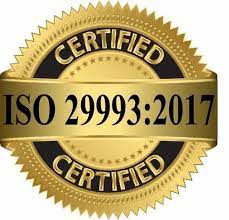
|
|
The economic upheaval of the 1970s had important political consequences. The American people expressed their discontent with federal policies by turning out Carter in 1980 and electing former Hollywood actor and California governor Ronald Reagan as president. Reagan (1981-1989) based his economic program on the theory of supply-side economics, which advocated reducing tax rates so people could employ more workers and keep more of what they earned. The theory was that lower tax rates would induce people to work harder and longer, and that this in turn would lead to more saving and investment, resulting in more production and stimulating overall economic growth. While the Reagan-inspired tax cuts served mainly to benefit wealthier Americans, the economic theory behind the cuts argued that benefits would extend to lower-income people as well because higher investment would lead new job opportunities and higher wages. The central theme of Reagan's national agenda, however, was his belief that the federal government had become too big and intrusive. In the early 1980s, while he was cutting taxes, Reagan was also slashing social programs. Reagan also undertook a campaign throughout his tenure to reduce or eliminate government regulations affecting the consumer, the workplace, and the environment. At the same time, however, he feared that the United States had neglected its military in the wake of the Vietnam War, so he successfully pushed for big increases in defense spending. The combination of tax cuts and higher military spending overwhelmed more modest reductions in spending on domestic programs. As a result, the federal budget deficit swelled even beyond the levels it had reached during the recession of the early 1980s. From $74,000 million in 1980, the federal budget deficit rose to $221,000 million in 1986. It fell back to $150,000 million in 1987, but then started growing again. Some economists worried that heavy spending and borrowing by the federal government would re-ignite inflation, but the Federal Reserve remained vigilant about controlling price increases, moving quickly to raise interest rates any time it seemed a threat. Under chairman Paul Volcker and his successor, Alan Greenspan, the Federal Reserve retained the central role of economic traffic cop, eclipsing Congress and the president in guiding the nation's economy. The recovery that first built up steam in the early 1980s was not without its problems. Farmers, especially those operating small family farms, continued to face challenges in making a living, especially in 1986 and 1988, when the nation's mid-section was hit by serious droughts, and several years later when it suffered extensive flooding. Some banks faltered from a combination of tight money and unwise lending practices, particularly those known as savings and loan associations, which went on a spree of unwise lending after they were partially deregulated. The federal government had to close many of these institutions and pay off their depositors, at enormous cost to taxpayers.
While Reagan and his successor, George Bush (1989-1992), presided as communist regimes collapsed in the Soviet Union and Eastern Europe, the 1980s did not entirely erase the economic malaise that had gripped the country during the 1970s. The United States posted trade deficits in seven of the 10 years of the 1970s, and the trade deficit swelled throughout the 1980s. Rapidly growing economies in Asia appeared to be challenging America as economic powerhouses; Japan, in particular, with its emphasis on long-term planning and close coordination among corporations, banks, and government, seemed to offer an alternative model for economic growth.
|
|
|
|
|
|
|
|
|
"We now accept the fact that learning is a lifelong process of keeping abreast of change. And the most pressing task is to teach people how to learn." -- Dr. Peter Drucker, Austrian-born American management consultant, educator
|
Home Home Certifications AMC® Training Council Continuing Ed Awards Careers Board Government Jobs Membership Ethics Handbook Events Benefits Exam Sample Omicron Chi News Accredited Degrees Management Degrees Accounting Degrees Financial Analyst Degrees Human Resource Degrees Application Links Disclaimer

Accreditation Bodies: www.GAFM.com * www.GAFM.org * www.CertifiedProjectManager.eu * www.AAFM.org * Certified Project Manager * Certified e-Commerce Consultant *Royal Law Society *Royal Business Society*Royal Business College*Royal Fellows*Royal Economics Academy*Oxford Law School*AAFM*Certified International Project Manager *

